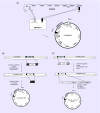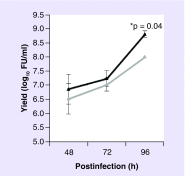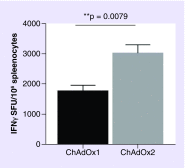Simian adenoviruses as vaccine vectors
- PMID: 29527232
- PMCID: PMC5842362
- DOI: 10.2217/fvl-2016-0070
Simian adenoviruses as vaccine vectors
Abstract
Replication incompetent human adenovirus serotype 5 (HAdV-C5) has been extensively used as a delivery vehicle for gene therapy proteins and infectious disease antigens. These vectors infect replicating and nonreplicating cells, have a broad tissue tropism, elicit high immune responses and are easily purified to high titers. However, the utility of HAdV-C5 vectors as potential vaccines is limited due to pre-existing immunity within the human population that significantly reduces the immunogenicity of HAdV-C5 vaccines. In recent years, adenovirus vaccine development has focused on simian-derived adenoviral vectors, which have the desirable vector characteristics of HAdV-C5 but with negligible seroprevalence in the human population. Here, we discuss recent advances in simian adenovirus vaccine vector development and evaluate current research specifically focusing on clinical trial data.
Keywords: BAC recombineering; chimpanzee adenoviruses; clinical trials; simian adenoviruses; vector vaccine.
Conflict of interest statement
Financial & competing interests disclosure The generation of ChAdOx2 vector described was funded by a Wellcome Trust Award to Adrian Hill (reference: 095540/z/11/z). The authors have ownership of a patent for ChAdOx1 and ChAdOx2. S Gilbert is a co-founder of, consultant to and shareholder in Vaccitech plc, which is developing viral vectored vaccines. The authors have no other relevant affiliations or financial involvement with any organization or entity with a financial interest in or financial conflict with the subject matter or materials discussed in the manuscript apart from those disclosed. No writing assistance was utilized in the production of this manuscript.
Figures




References
-
- Dudareva M, Andrews L, Gilbert SC, et al. Prevalence of serum neutralizing antibodies against chimpanzee adenovirus 63 and human adenovirus 5 in Kenyan children, in the context of vaccine vector efficacy. Vaccine. 2009;27(27):3501–3504. - PubMed
-
- Zhang S, Huang W, Zhou X, Zhao Q, Wang Q, Jia B. Seroprevalence of neutralizing antibodies to human adenoviruses type-5 and type-26 and chimpanzee adenovirus type-68 in healthy Chinese adults. J. Med. Virol. 2013;85(6):1077–1084. - PubMed
Publication types
LinkOut - more resources
Full Text Sources
Other Literature Sources
Molecular Biology Databases
Miscellaneous
